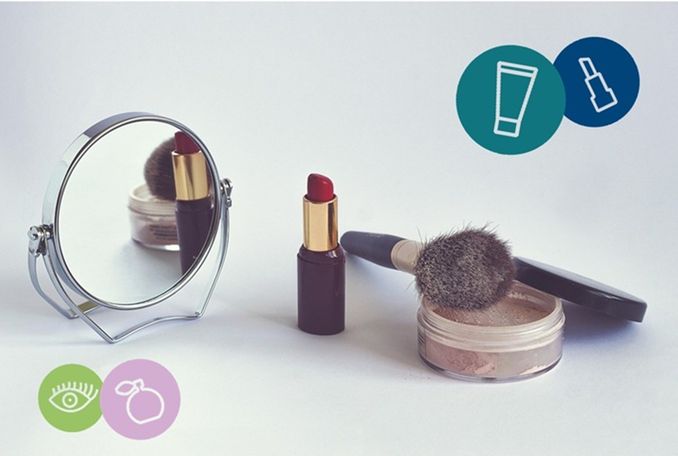
After years of contouring, plumping, and promising perfection in a bottle, the beauty industry is getting a reality check. From tan expected to deepen skin 5 shades darker overnight to lip plumper’s claiming long-term pout power, some cosmetic ads have been turning heads, but for all the wrong reasons…
To mark the moment, we’ve rounded up a trio of ASA rulings that show what happens when beauty claims go a little too wild (and a little too filter-happy!). Spoiler: you’ll need more than a buzzword and a before-and-after photo to pass the test!
Serving Looks — with a Side of Saturation:
Our first case deals with an Instagram story from the cosmetic brand ‘Skinny Tan’, which starred user-generated content referencing their fake tan products. The story included an image of influencer Elly Norris using the tanning product with the text caption “Haven’t done my make up yet but absolutely obsessed with the @skinnytanhq coconut serum I used last night. Smells amazing. Can’t wait to get some proper pictures to show you guys!”
However, this story received a complaint from a member of the public, who believed the post used a filter that deepened and exaggerated the tanning results. Elly Norris had indeed used a filter on her video, called Perfect Tan, which deepened her skin digitally. Skinny Tan responded saying that they did ‘not endorse or encourage the use of filters to exaggerate efficacy and aimed to portray their products in an authentic way’ and only reposted the story as it was a genuine customer review.
The ASA concluded that these claims were misleading as audiences would expect their tan to be as deep and effective as the filter posted by Elly Norris, which was effectively confirmed by Skinny Tan by their repost. They therefore upheld the complaint.
There’s nothing wrong with using filters generally, as long as they don’t exaggerate the effect or efficacy of your product. Adding a qualification or a disclaimer doesn’t diminish your responsibility – any disclaimer is likely to counteract the overall impression of the ad – also a breach of the Code!
Porefection in every pixel:
Our next ruling features a paid-for Facebook ad for Oneade, a skincare and cosmetics brand, promoting a Poreless Deep Cleanse Green Tea Mask Stick, with a video of models using the stick. The video included sped up shots, set to music, of the stick being wiped away to show the removal of blemishes and acne with dramatically improved skin underneath. The ad also featured a ‘before and after’ picture to show filter-like skin.
A complainant believed that filters were applied to the model’s skin and that the product did not have the blackhead removing effect depicted in the shots and challenged whether the ad was misleading. There was no response from Oneade once the issue was raised, breaching Code rule 1.7 (causing an unreasonable delay).
The ASA believed the ‘before and after’ photos were dramatically filtered due to the ‘miracle’ results of clearing blemishes, including acne. Oneade also did not provide any evidence to demonstrate the shots in the ad were representative of the skin-clearing effect consumers could expect, or that the results were unaltered. Therefore, the ad breached the Code.
Any before and after photos need to be genuine, and you also need to hold signed and dated proof they are genuine, too.
Plump fiction!
Our final case deals with a TikTok post on influencer Aimee Crowder’s account promoting a lip product, Plump It! No Needles Lip Filler Kit. She stated, “It comes with two products… The volumizing one…and the hyaluronic one… if you use it regularly enough, it’s gonna give you more long-term results.” In the comments section, Plump It! stated, “We can confirm that our Hyaluronic Lip Plumper creates long term plumping results by naturally improving collagen production”.
The ASA received four complaints about the ad, challenging the efficacy of the Hyaluronic Lip Plumper and the claim “long-term results”. Plump It! responded stating their Hyaluronic Lip Plumper contains Volulip™, an active ingredient tested by its manufacturer. They provided results from a study involving 29 women.
The ASA considered that consumers would understand from the claim that regular use of the product would give increased volume for an unspecified period of time, after use. They also considered this in conjunction with the claim “naturally improving collagen production” and found these statements suggested the product had a physiological rather than cosmetic effects. As such robust scientific substantiation was required.
When considering the evidence, the ASA noted it appeared that the testing, which ended after one month, did not determine if the claimed effects continued after participants stopped using the balm. In addition, the study did not have a control group, was not peer-reviewed, and the Plump It! Product itself had not been tested. As such, they thought the evidence for the claims was insufficient.
Claims such as “naturally improving collagen production” are likely physiological in nature, and therefore require a very high level of evidence. Marketers looking to make similar claims should have a read of our Guidance on the level of substantiation expected in health, beauty and slimming claims, which goes through the levels and types of evidence needed for similar claims.
These three rulings provide a really good foundation of truth for marketers. But don’t feel like you need to make it up as you glow – we have tons of information in our Beauty and Cosmetics: General guidance, and the Copy Advice team is always on hand to keep you picture perfect!
More on
-
Keep up to date
Sign up to our rulings, newsletters and emargoed access for Press. Subscribe now.


